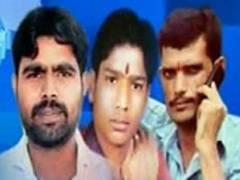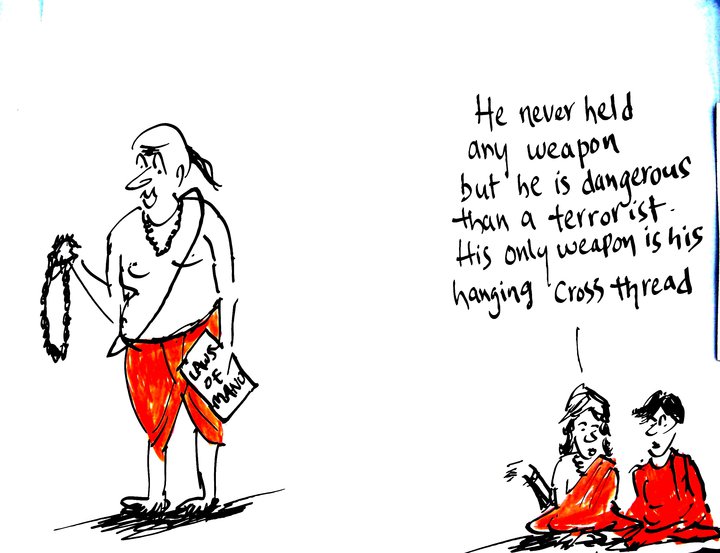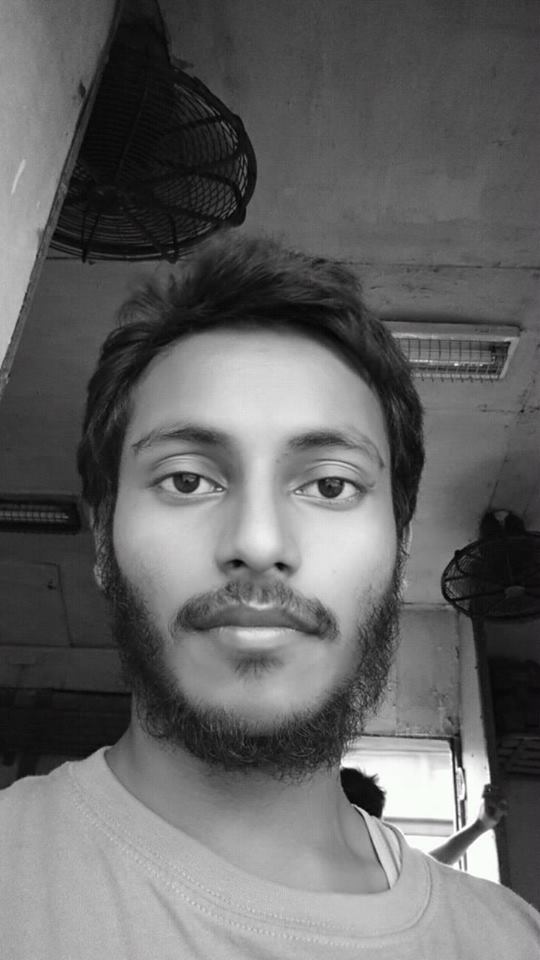Kunal Shirsathe & Manisha Tokle
[Translated from Marathi by Shivali Tukdeo]
“I saw my son cut up in pieces. I cannot endure the grief. Did my son commit a crime by falling in love with a girl from the Maratha caste? They had plans of getting married. But he was murdered by those people. They are not humans. They are devils”
~ Kalabai Gharu, mother of Sachin Gharu.
Kalabai’s painful outrage after her son’s murder poses several disturbing questions. Questions on the feudal, casteist tendencies that have flourished under the garb of Indian culture. Questions on the Brahmanical ethos that supports violent fanaticism. Questions on our intellectuals showering praises on our “democracy”. Questions about the society that will be saddened by this murder, but nonetheless will continue to be blinded by the arrogance of casteist beliefs. Kalabai’s outrage is also directed towards the Brahmanical system that rejects the very humanity of people. Her questions have torn open the hideous, inhuman face of our self-proclaimed liberal society.

Lost in the fog of intolerance is the recent triple-murder of Dalit youth in Sonai, Ahmednagar district of Maharashtra. This is a fact-finding report.
Victims of Casteism
The new year began in the village of Sonai with the murder of three young men: Sandeep Thanvar, Sachin Gharu and Rahul Kandhare, all belonging to Mehtar (Valmiki) caste. All the seven accused in this case have been arrested. They include four men of the Darandale family: Ramesh Darandale, Popat Darandale, Prakash Darandale and Ganesh Darandale and three others including Ashok Navagire, Sandeep Kurhe and Ashok Falke. The reason behind the murder is very clear. Sachin Gharu and Darandale’s daughter were in love. The relationship did not receive approval because Sachin was a Dalit man and the girl was Maratha, the so-called upper caste. Their decision to marry would not have fit well with the supposed status of the Darandales. Hence the plot was hatched.
Sandeep, Sachin and Rahul were working as cleaning staff in the school and college run by the Trimurti Pavan Foundation in Nevasa, a taluka/mandal near Ahmednagar. This was the only means of their income. Sandeep had been working there for many years and had married outside his caste. He stayed in the staff quarters with his wife and his one-year old son. Sandeep was the one who got Sachin the job at the same place. Sachin also got accommodation in the staff quarters and was staying there with his mother. Just five days before their fateful murder, Rahul joined the institute and he was put up in a small room in the hostel. Sandeep was the leader of the group.
Darandale’s daughter was studying in the same college and it was there that she and Sachin fell in love with each other. Darandales got the word of their courtship and asked Sachin to leave her or risk losing his life. Kalabai remembers the threats her sons received from the Darandale family. The threats scared Sachin, but he decided to go ahead with the wedding. When Darandale found out that Sachin and the girl did not discontinue their meetings even after the threats, he had a message sent to Sachin via Ashok Navagire. Darandale asked to meet Sachin and Sandeep. The latter was friends with both Darandale and Ashok. Upon receiving the message, Sandeep, Sachin and Rahul went to meet Darandale.
“Their mobiles were out of reach till 4:00 pm on January 1st” says Pankaj Thanvar, Sandeep’s brother who is a Jawan in the army. “My sister-in law was petrified. Then we heard from the police that the three of them were killed. We were shocked. Sandeep was very mellow by nature. He did not have enmity with anyone.”
Among the accused, Ramesh and Prakash first contacted the police and reported that Sandeep died by drowning while cleaning the septic tank. When the police began investigating, they pulled Sandeep’s body out of the tank. The “drowning” of a six-foot man in a tank that barely had water up to 2 foot made them suspicious. In their inquisition with Ramesh Darandale, he changed the story and said, “the two friends (Sachin and Rahul) killed him, dumped his body in the tank and fled.”
While checking out the nearby area, the police found a dried-up well and decided to probe further. Inside, they found a corpse without its head and limbs. The other body parts were soon recovered from nearby places where they were buried. From among the scattered body parts that were found, the police could not identify the bodies.
Sachin had tattooed the girl’s name on his chest and that led to the identification of his body. It also became clear that they both were murdered using a sharp sickle. The Darandale family including Ramesh, Popat and Prakash were arrested. The crime was reported under the article 302 of the Indian Penal code, but not under the Scheduled Castes and Scheduled Tribes (Prevention of Atrocities) Act. It took the police five more days to register the case under the atrocity prevention act.
Dubious Investigation
1. There is no explanation for the delay in registering the FIR under Scheduled Castes and Scheduled Tribes (Prevention of Atrocities) Act.
2. The police have not included the motive of the crime in the FIR.
3. Despite the clearly planned nature of the crime, the police did not include it in the FIR.
4. The girl’s name was tattooed on Sachin’s chest, but this fact was not included in the post-mortem report.
5. On January 1st, the district police commissioner assured protection to the families of the deceased. However, for reasons of safety, Sandeep’s family went to Malegaon and Sachin’s mother left for Jalgaon.
6. The police did not record testimonies from the families of the deceased. They did not think it was necessary.
7. The district police commissioner did not inform the home minister about this case for a month. Similarly, the palak mantri (minister for the district) did not brief the Chief Minister.
8. In the month since the incident, government officials did not think it was important that they visit Sonai. The commissioner, the district collector, the palak mantri — none of them visited the town or contacted the aggrieved families.
9. The case remained stalled for over a month, with no further action. Ganesh Darandale and Ashok Falke were arrested on February 7th. However, there may have been many more people who participated in the murder.
10. There is nothing accidental about the lacunae in the investigation. The inadequacy has a purpose.
11. Local politicians from Congress and NCP are putting pressure on the police in this matter. Regarding this, the human rights activist Manisha Tokle has called for an appropriate action against the police officials working on this case under Article 4 (neglect of duty).
The Media
The news of this brutal murder spread in the district of Ahmednagar. But there was no dissemination of subsequent developments. Local politicians, caste group leaders and police tried to control the flow of information under the pretext that “the investigation is on”. However, some human rights activists including Manisha Tokle, Priyadarshini Telang, Siddharth Shinde, Rajathan Kale and Sandip Mhaske persisted and ensured that the case did not vanish. Soon enough popular Marathi television news channel IBN Lokmat covered the issue, followed by many other channels. Thus the news reached the people in Maharashtra and the rest of the country. After the media coverage, the CM and home minister paid attention to the case. A retired magistrate and SC/ST commission member C.L. Thool visited the place and ordered that the motive for the murders be made central to the investigation.
The CID investigation
On February 5th, the Chief Minister announced that the investigation had been handed over to the CID. However, the palak mantri, Babanrao Pachpute contradicted this by stating that the decision about CID-led investigation will be taken in the ministerial meeting. This only highlighted the lackluster attitude of the government.
Response by Maratha Caste groups
Following the coverage of the case and widespread discussions, Sambhaji Dahatonde, the leader of the Maratha Association had this to say: “Don’t malign the Maratha caste.” The real tragedy is that organisations such as Sambhaji Brigade, Maratha Seva Sangh etc., use the slogan ‘Phule-Shahu-Ambedkar’ for their political gains. These groups often say that they are allies of the Dalits. Why did these organizations not take to the streets to protest the murders in Sonai? The Maratha-caste people in the village have also been spreading rumors about the sexual indiscretion of the three Dalit youths. Stories are being made up about how the girl was sexually harassed for a long time by the deceased. The fact is that Rahul, one of the deceased, had just taken up the job. It is also important to note that the girl has not yet given a statement to the police. Another relevant point here is that Sachin had tattooed her name on his chest and they were planning to marry soon. Given this, the purpose of generating such rumors is to break the present momentum this case has attained, and shatter the public empathy for the Dalit youth.
Where is the Girl?
The girl was summoned by the police twice to record her statements, but she did not say anything due to mental anguish and fear. Eyewitness accounts say that she fainted seeing the family of the deceased. She can perhaps see that those who can murder three Dalit youth for misplaced ideas of status can also harm her. While she has refused to speak on the matter, her tears do tell the story.
Demands by Pankaj Thanvar (Sandeep Thanvar’s brother)
The following are Pankaj Thanvar’s demands:
1. Given the tremendous pressure on those associated with this case, it should be handed over to the CID or the govt should appoint neutral and sensitive police sub-inspector for investigation.
2. The court proceedings of the case should be conducted outside the district of Ahmednagar.
3. The case should be heard in the fast-track court.
4. Public prosecutor Mr. Ujjwal Nikam should be appointed in the case.
5. The family members should be given protection in and outside the district.
Compensation.
The three youth killed in this case were breadwinners and supported their entire families. The loss is irreplaceable for their dear ones. The compensation given by the department of social welfare is not adequate. We demand that the CM should offer minimum 10 lacs to each of the three families. Sandeep’s wife is educated and her one-year old son is dependent on her. The govt should give her employment opportunity. Sachin Gharu’s mother now lives with her daughter. The government should give her a means of income. Punishment to the perpetrators and compensation to the families is essential to the process of justice in the case of these casteist murders.
Honour killing (?)
I find the words “honour killing” objectionable, so I won’t describe this case using that term. How can killing restore anyone’s honour? What kind of honour? The concept, however, does tell us that the honour is that of being the upper caste. Do Dalit Bahujan women and men not deserve to have honour? This word erases the oppression and hierarchy of caste system and denies women’s right to choose their partners. So I will call this case the “casteist murder”. We have to note that Manusmriti prohibited marriage between upper caste women and shudra men. That the seeds of this murder are in the Brahmanical system is something we cannot forget.
What can we do?
1. We can follow this matter by writing to the Home Minister and the Chief Minister. We must protest and demand justice.
2. We need to highlight the matter of compensation for families. We can also raise money for them.
3. We should always commit to lend our voice to such struggles. In our local context, we should support inter-caste marriages.
4. We must organize against the violence of the Brahmanical system
Talking at length about this case, Pankaj Thanvar was overwhelmed with emotions. “We don’t see caste and religion when we perform our duty and protect the country. However, if our families are going to be killed because of caste and religion, then why should we protect this country? If we are not allowed to live as human beings, what can one do? The accused are very powerful. Will we get justice?” I have no answer to Pankaj’s question. Do you?
~~~
Manisha Tokle is a well known human rights activist in Maharashtra.
Kunal Shirsathe is a student in Pune University and a Dalit activist. Email: kunalshirsathe-at-gmail-dot-com
Shivali Tukdeo teaches at the National Institute of Advanced Studies, Bengaluru.










